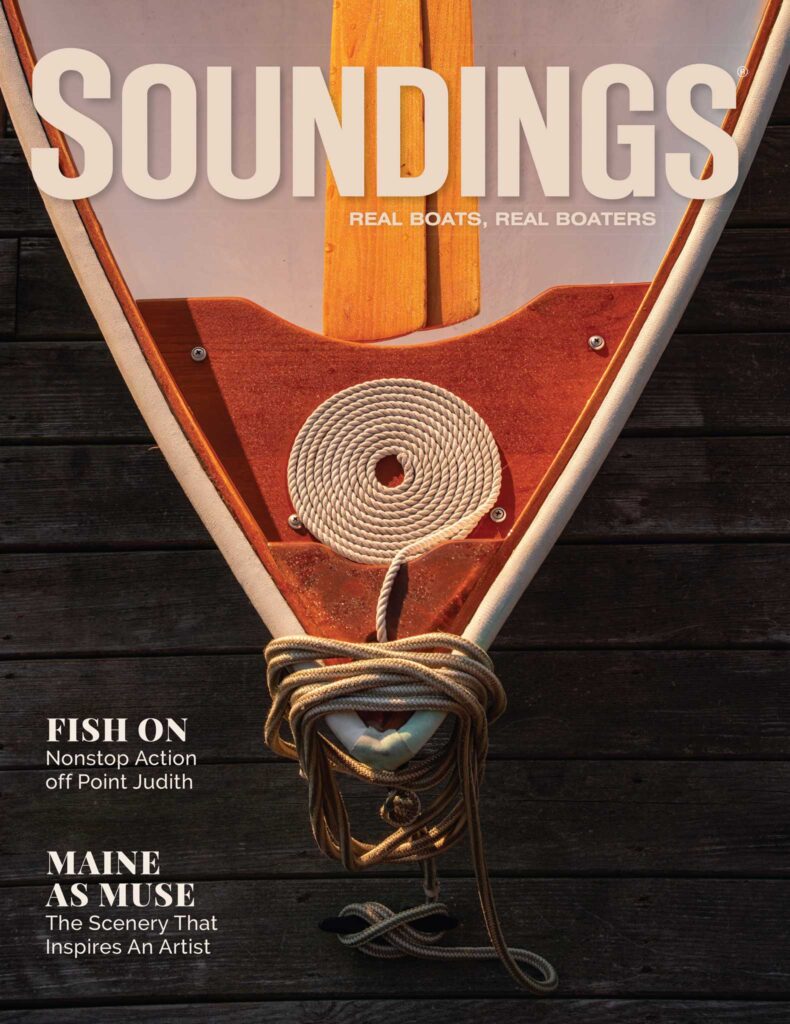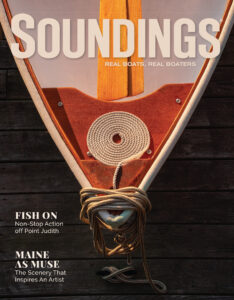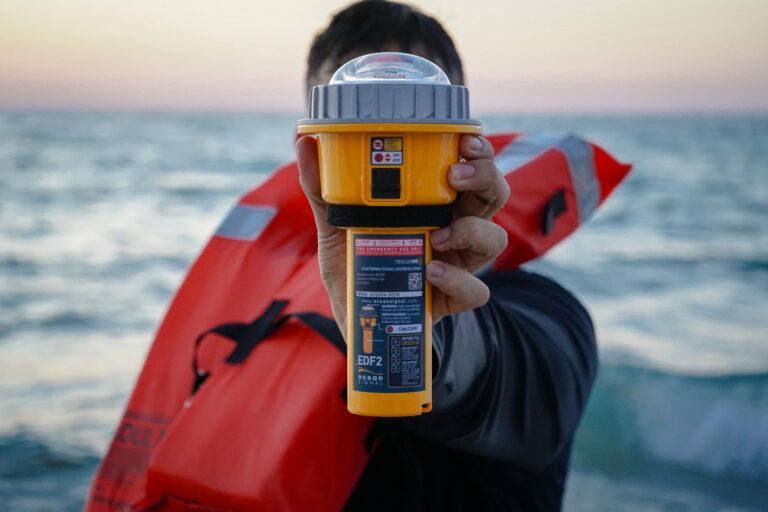A Maine boatbuilding school has found success with an ambitious new project.
Kennebunkport’s Landing School of Boatbuilding and Design has come out with a new program building a 27-foot cruising powerboat. Two teams of about seven students each spend 10 months building a pair of the boats — called the Arundel 27 — each academic year.
The school primarily has built sailboats in its history, says assistant director Dennis Collins. It has produced about 230 boats since opening in 1978, he says.
“Generally speaking, this is really different for us,” says Collins. The closest project to the Arundel 27, he says, was a series of Hacker Craft replicas the school built about 10 years ago.
The Landing School recently had a nine-year run with the LS-26 — a 26-foot sloop designed by former design program manager Ken Rusinek — and was looking for a new challenge.
“We’d reached that point where we wanted to do something different,” says Collins. The boat would serve students interested in powerboats in the design, boatbuilding and marine systems technician programs at the Landing School. A powerboat also would be interesting and exciting for the staff, says Collins.
After a couple years of discussions about the powerboat — including the involvement of school trustees — the assignment for designing the boat was given to design program manager Steve Dalzell. He had one academic year to come up with a design that was both educational and marketable.
Though the Landing School is a non-profit institution, the sale of school-built boats is an important source of income.
Therefore, the school studies the marketplace “just like the big guys,” Collins says, such as The Hinckley Company and Sabre Yachts.
Design program manager Dalzell says he designed the Arundel 27 to have a distinctly New England style, with traditional appeal and seaworthiness.
“She looks like a standard bass boat,” says Dalzell. “[But] there ain’t many [bass boats] that do 34 knots.” From a marketing perspective, the school knew it wanted a boat that would do better than 30 knots, he says. A hard-chined boat was in order, and Dalzell says the Arundel 27 is actually a bit faster than he thought it would be. It could reach speeds of 40 knots safely, he says.
Collins says it’s a real advantage for students to have the designer on-site and participating in the boat’s construction.
“We select boats to build primarily because of their curriculum value,” says Collins.
Dalzell echoes those sentiments.
“She has to serve two purposes,” the designer says. “The first purpose she has to serve is as a teaching tool, and then as a marketable product.”
The boats are hand-lofted, Collins says, so basically each boat has its own mold created by students. The male mold is then destroyed as the students put in the bulkheads, he says.
“So each boat is, in fact, unique,” says Collins. Laughing, he adds: “We hope not too unique.”
The students start on Day One with just blueprints, and by the end of the school year they complete sea trials, he says. Owners take delivery of their new boats at graduation.
The schedule entails each student putting in 1,600 hours of labor over the 10-month period, Collins says.
The weight of the wood and the overall dimensions were mostly determined by the limits of time, labor and shop size, Dalzell says.
“We had a set of constraints within which we needed to work,” says Dalzell, a former senior lecturer in naval architecture at the Southampton Institute in the United Kingdom.
The boat’s cold-molded bottom is built with three layers of 1/4-inch plywood. The topsides, built with Western Red Cedar, use cold-molding and include design features such as flare and tumblehome. The hull is covered with fiberglass and the cabin top is built with balsa-cored fiberglass, Dalzell says.
“She was designed to incorporate building techniques that really teach students,” says the designer. He says that in many cases it is more complicated than what a commercial shop would do.
The marine systems elements of a powerboat, such as the seacocks, plumbing and holding tank, also have educational perks compared with the more traditional sailboats the Landing School builds, Dalzell says.
The boat itself measures 27 feet, 5.5 inches (LOA) with a beam of 8 feet, 5.5 inches, and a draft of 1 foot, 2.5 inches.
The Arundel 27 is powered by a Volvo Penta D4-210 DuoProp stern drive. Dalzell says the Volvo Penta engine has a “plug-and-play” quality that makes fitting it into the boat easier and more efficient. It also exposes students to the latest engine technology.
The cockpit/helm area of the boat is finished in mahogany, and includes Stidd helm and navigator seats, and an aft bench seat. Below decks there is a V-berth forward, a head compartment to starboard and a galley to port. The galley has a sink, refrigerator/freezer and stowable butane stove. The cabin has a teak and holly sole.
The cabin has mahogany cabinetry and fiddles, and the companionway door is also mahogany.
The first two Arundel 27s were completed at the end of the 2004 school year, and the owners took delivery at the school’s graduation. Currently, one of the two boats being built for 2005 is under contract, as is a 2006 boat.
The price is $139,900. Collins says he encourages anyone interested in the school’s boats or educational programs to visit or contact the school.
Landing School of Boatbuilding and Design, Kennebunkport, Maine. Phone: (207) 985-7976. www.landingschool.org










